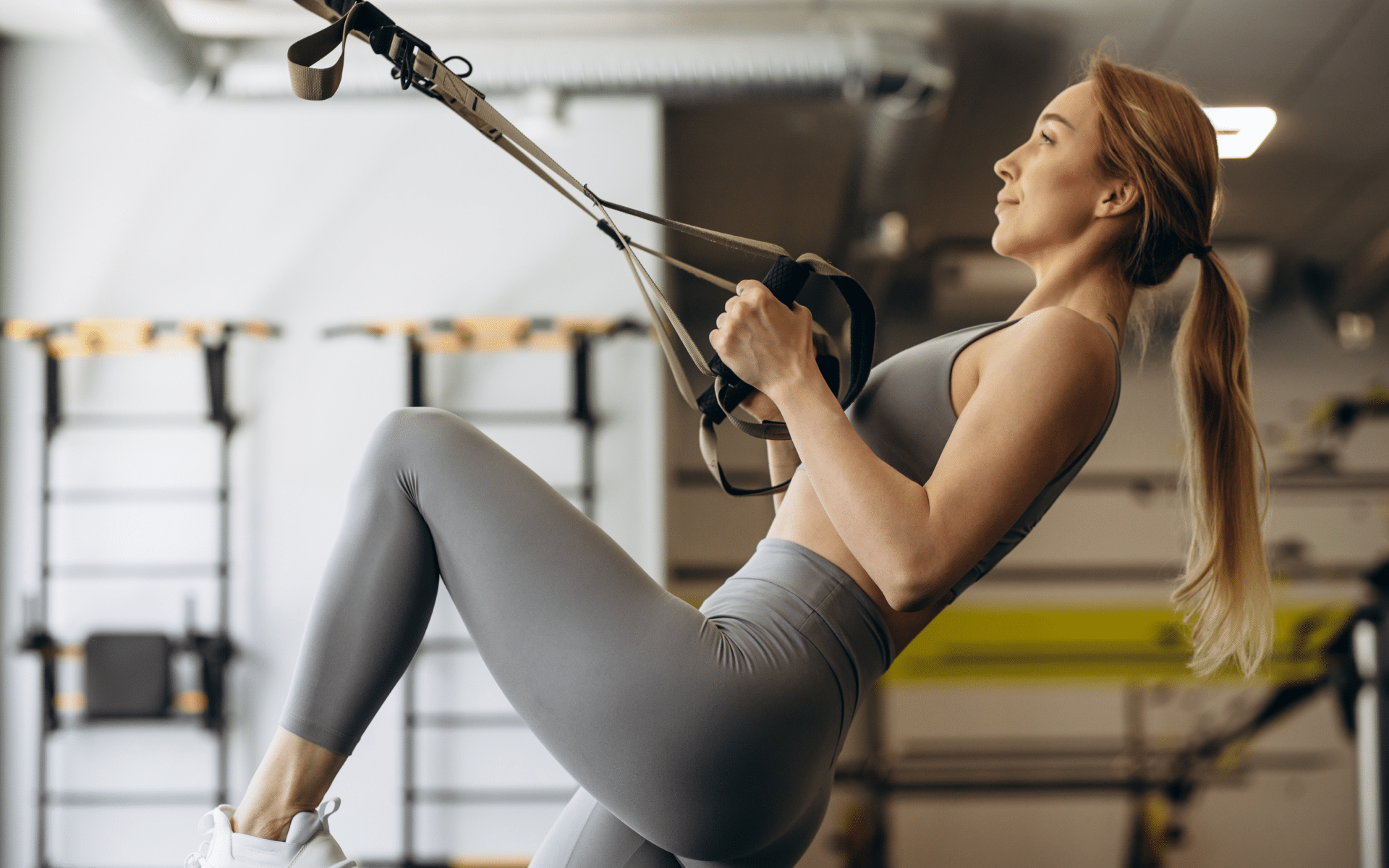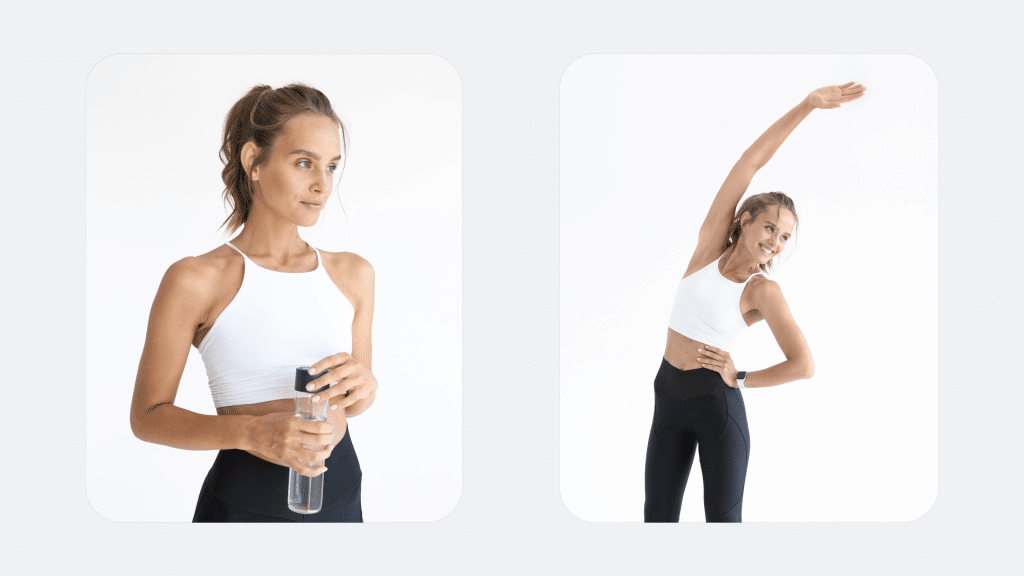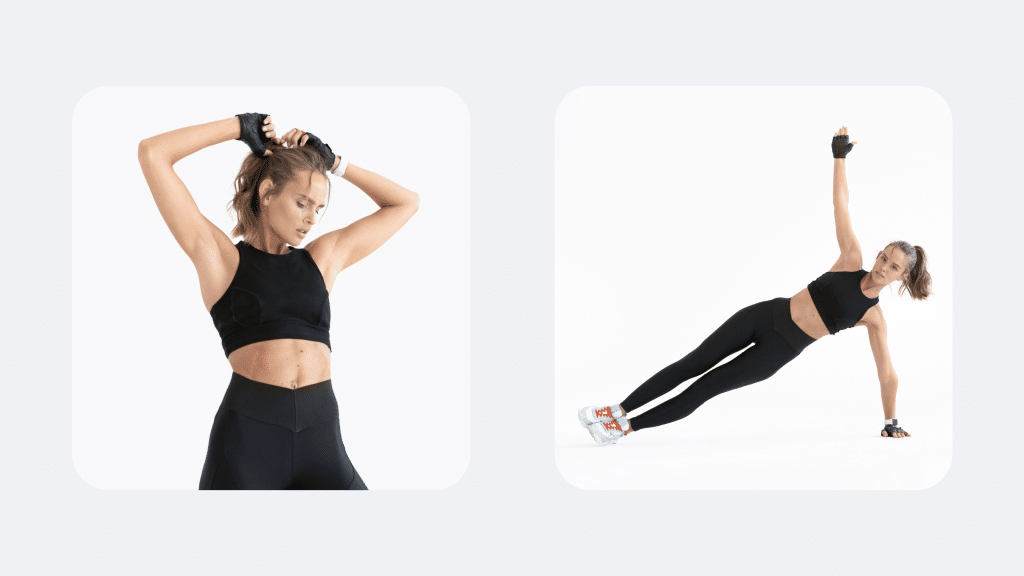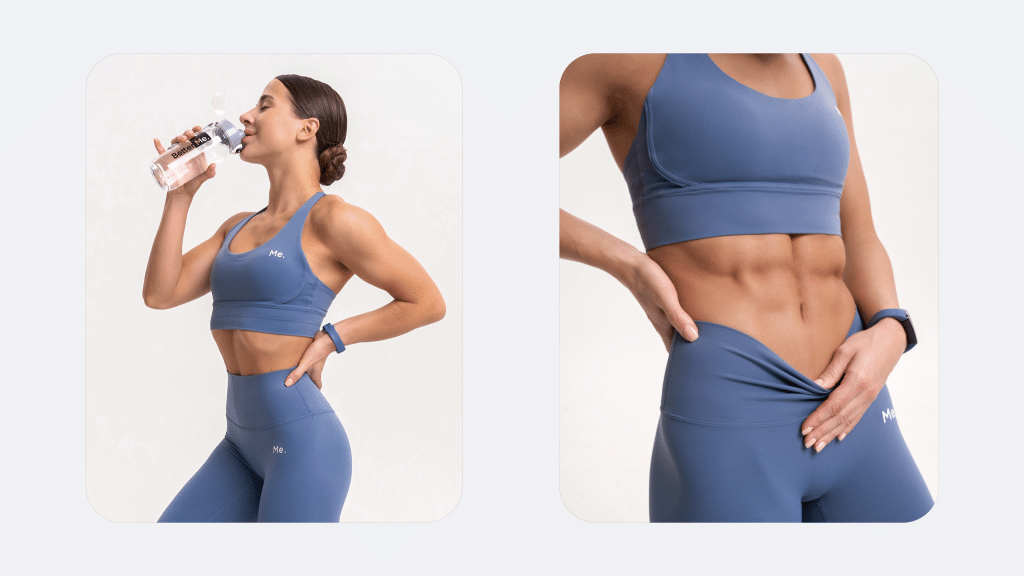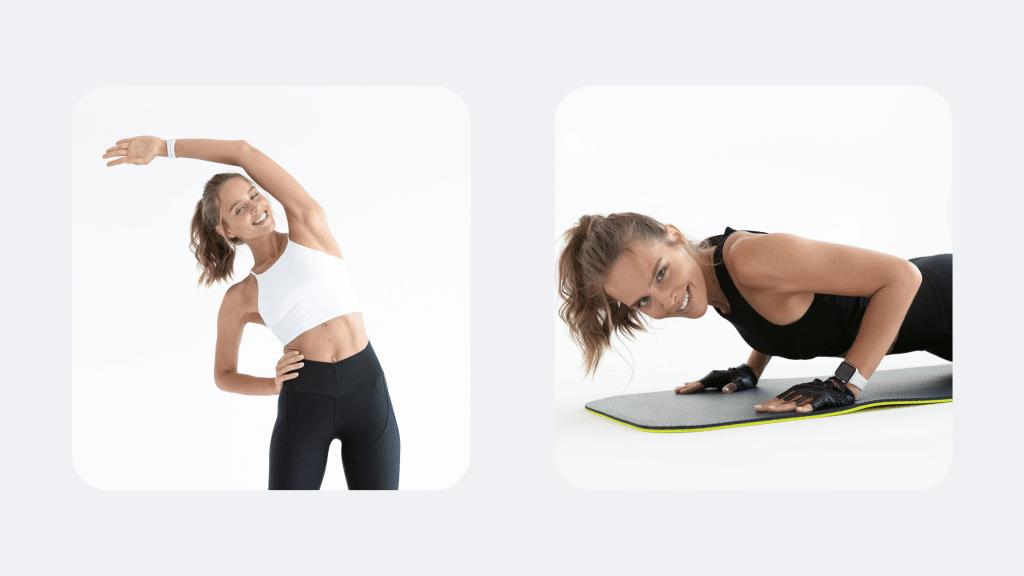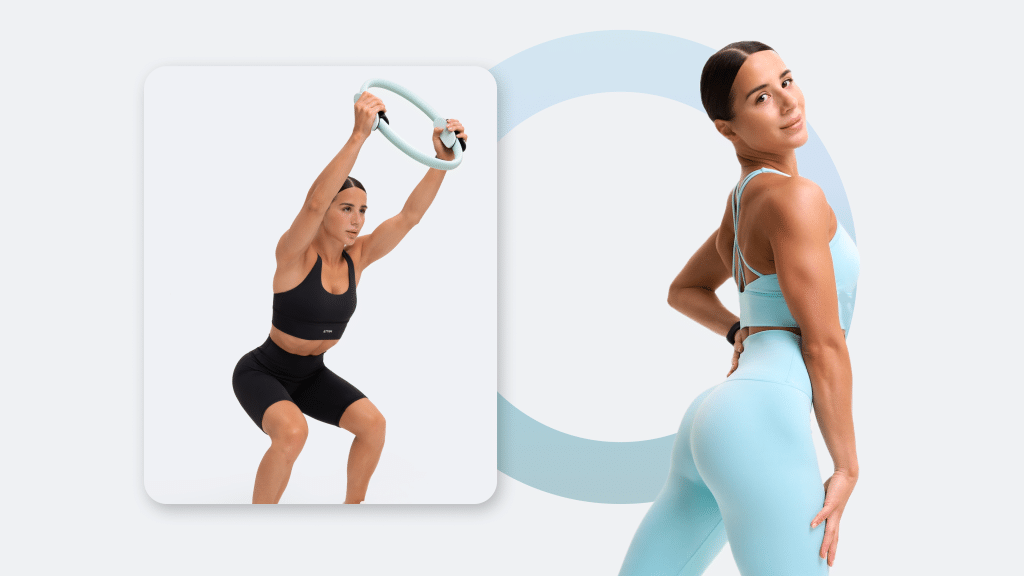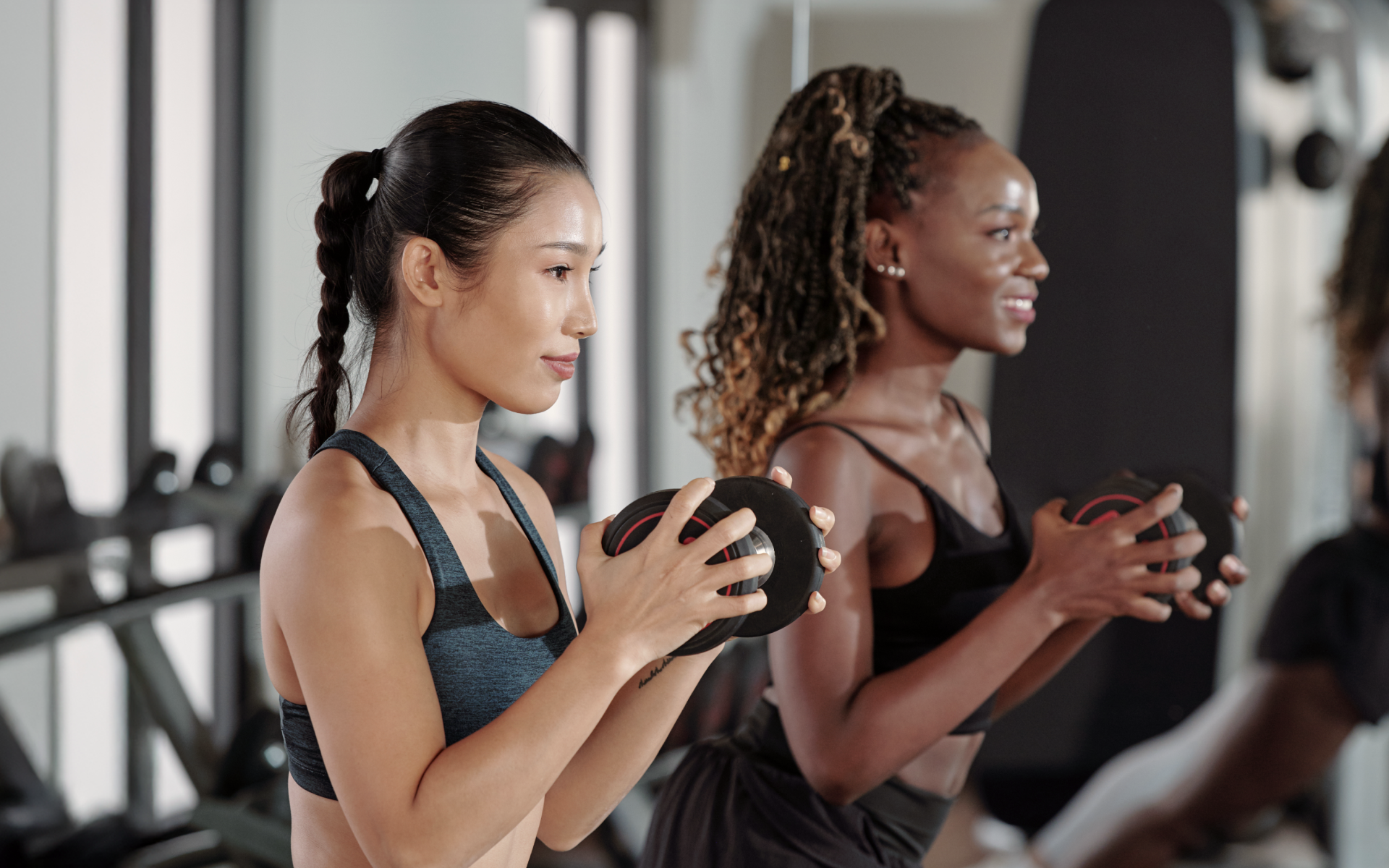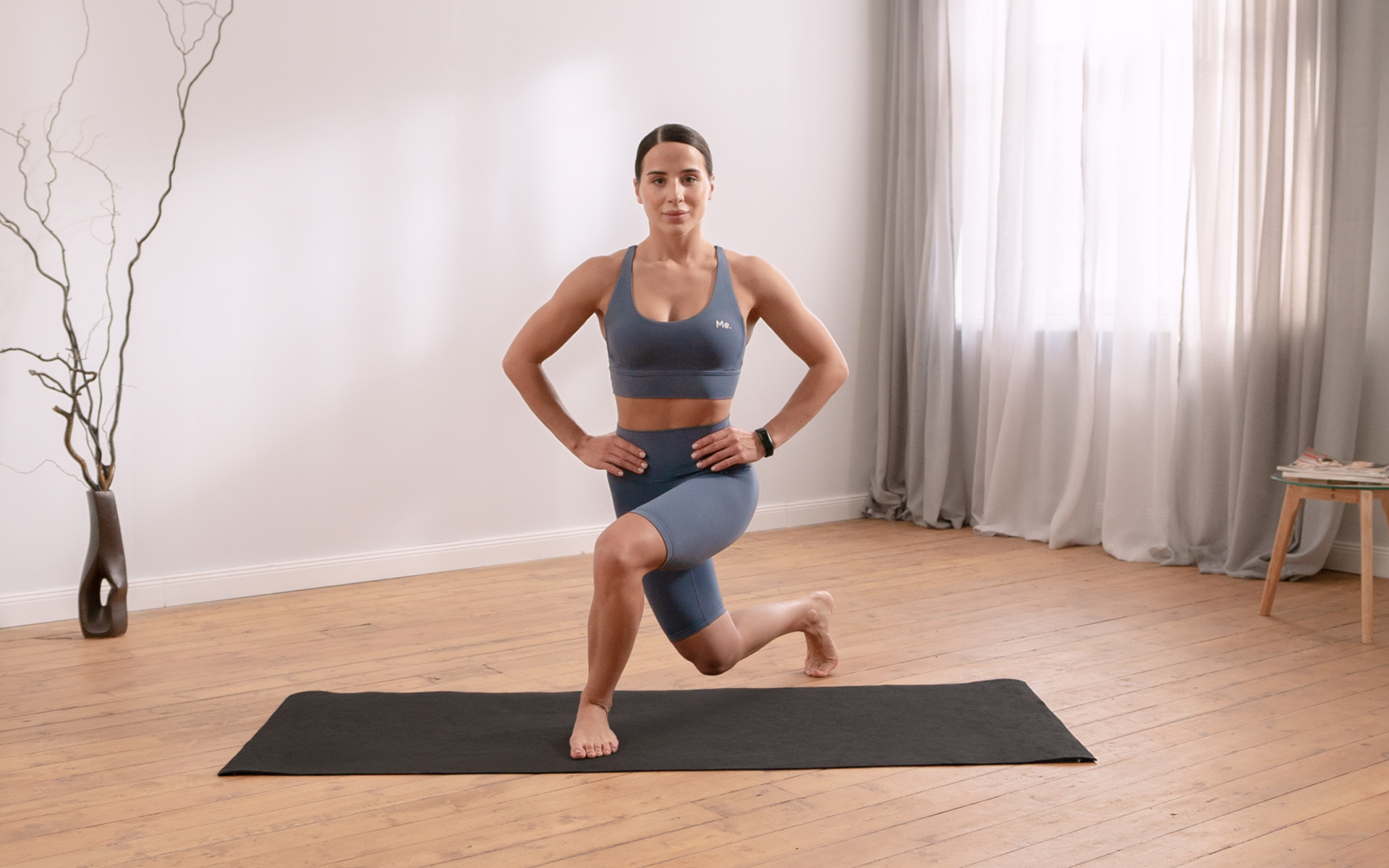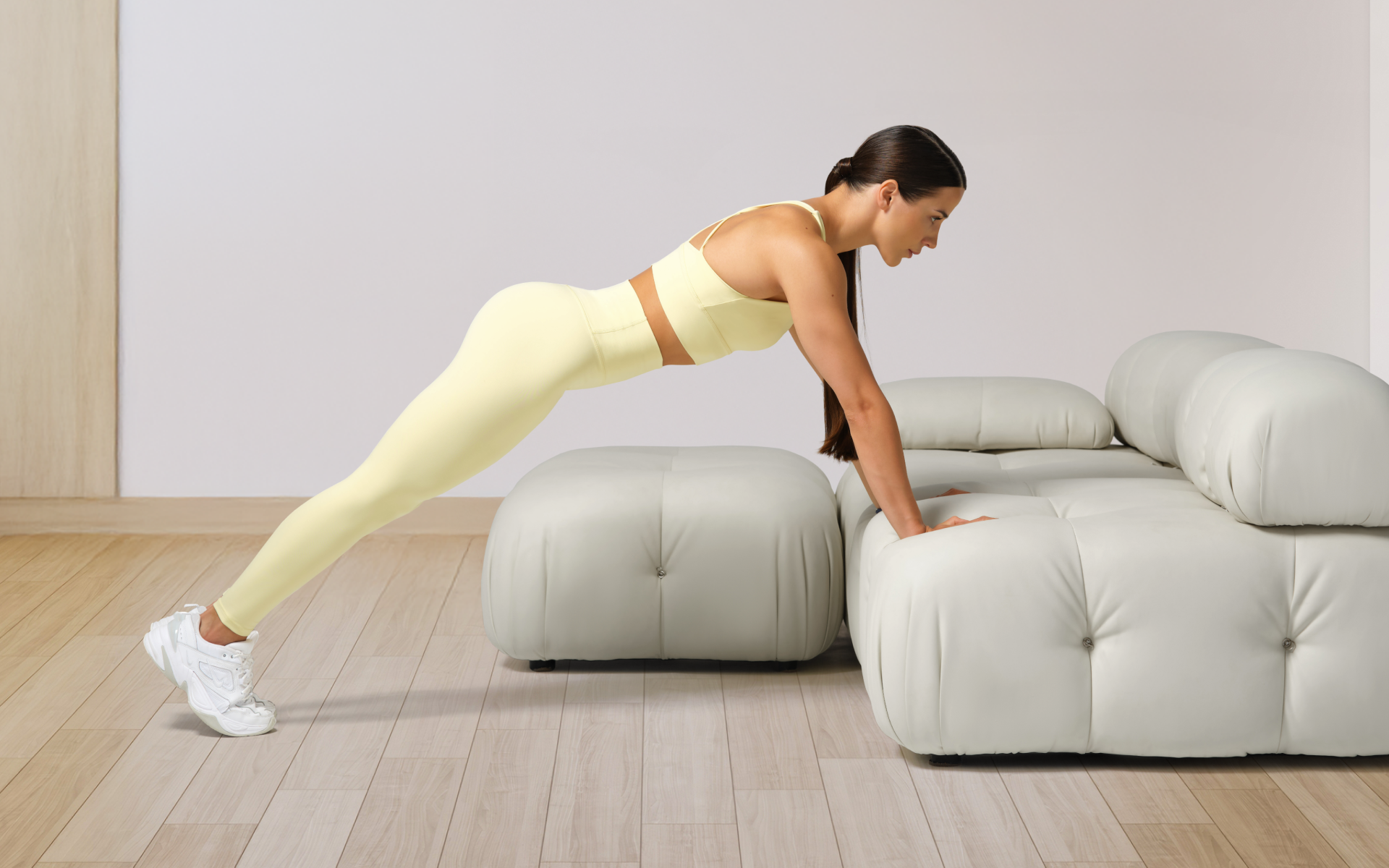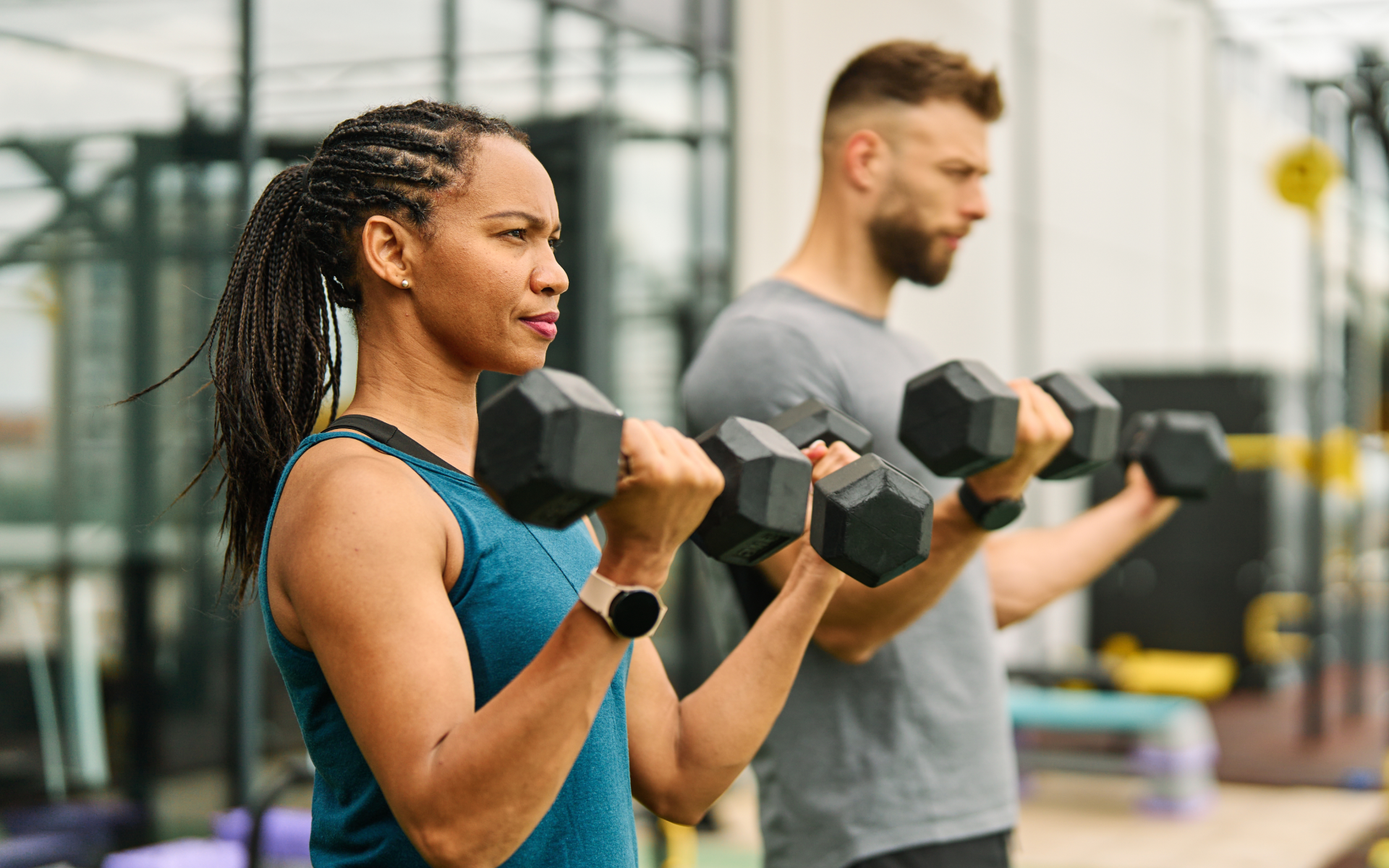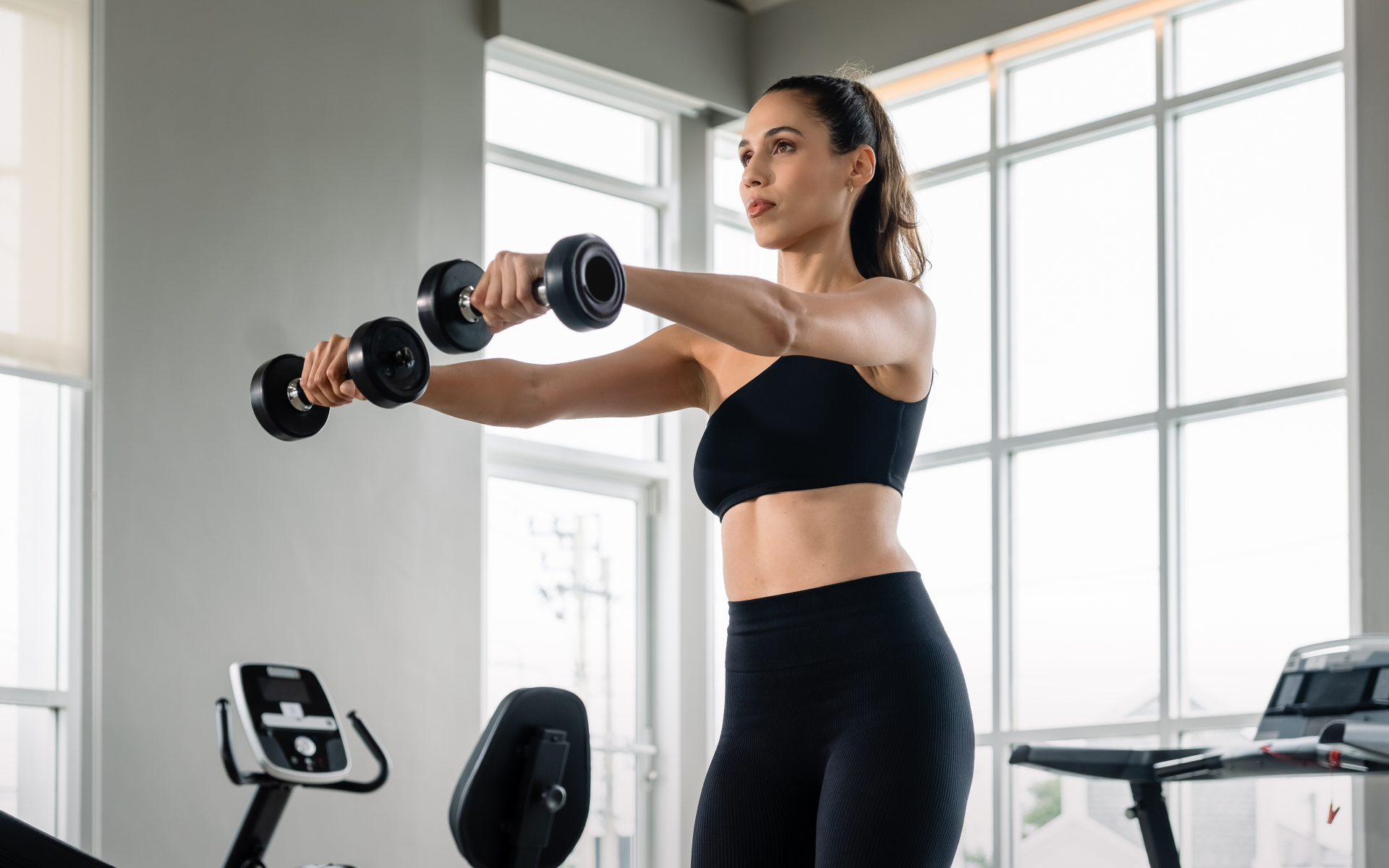Core strength is crucial: it helps you maintain proper form, breathe better, and prevent injuries during different movements.
Various studies have identified the role of core strength in back pain reduction and athletic performance (1, 2).
Therefore, training your core is not necessarily about aesthetics; it’s about strengthening one of the most fundamental parts of your body.
Aside from 8 easy core exercises for beginners who want to increase their strength, mobility, and stability, we will also uncover the answers to the following questions:
- How to tell if the core is weak?
- How do you train core beginners?
- How can I build my core strength easily?
- What are the most effective and easy core exercises?
- Do core exercises burn belly fat?
- Is a 10-Minute core workout enough?
- Should you do core or abs first?
- Is it okay to work your core every day?
What are Some Easy Core Exercises?
“Easy” is a relative term because everyone has varying levels of exercise conditioning.
What may be easy for one person may be challenging for another. However, the following exercises are good starting spots for strengthening and developing the core. They don’t require a lot of space or fancy equipment, either.
These workouts ramp up your core stabilization and strength, allowing you to execute daily movements or other vigorous exercises safely.
- Segment Rotation
- Bear Plank Hold
- Bicycle Crunch
- Glute Bridge
- Superman
- Dead Bug
- Plank
Exercise #1: Dead Bug
Performance:
- Lie on your back, raising your arms toward the ceiling. Bring your legs into a tabletop position by bending your knees at 90 degrees.
- Extend your left leg straight while simultaneously dropping your right arm overhead. Keep your leg and arm a few inches from the ground.
- Bring your arm and leg back to the starting position and repeat on the other side. That’s 1 rep.
- Continue alternating for 10–16 reps.
Exercise #2: Glute Bridge
Performance:
- Lie on your back with your knees bent. Keep your back in a neutral position. Tighten the abdominal muscles and focus on lifting your pelvis.
- Raise your hips off the floor until your body creates a straight line from head to toe. Hold for three deep breaths. Focus on tightening the abdomen when breathing out.
- Return to the start position and repeat.
- Perform 8-10 times.
Whether you’re a workout beast or just a beginner making your first foray into the world of fitness and dieting – BetterMe has a lot to offer to both newbies and experts! Install the app and experience the versatility first-hand!
Exercise #3: Superman
Performance:
- Lie on your stomach on the mat and tighten your abdominal muscles.
- Raise your left arm off the floor. Hold for three deep breaths. Lower your left arm down and repeat with your right arm.
- Then, raise your left leg off the floor. Hold for three deep breaths. Lower your left leg and repeat with your right one.
- Repeat the movements 20 times on your arms and 20 times on your legs.
Exercise #4: Bear Plank Hold
Performance:
- Get on all fours with a neutral spine, knees under hips, and wrists under shoulders.
- Use the core to raise your knees off the ground a few inches so you’re balancing on your palms and the balls of your feet.
- Hold for a few seconds, then lower your knees to the ground.
- Repeat for 8-12 times.
Exercise #5: Bicycle Crunch
Performance:
- Lie on your back with both hands behind the head, knees bent and stacked directly over hips.
- Lift your left shoulder off the mat as you rotate up and over toward your right knee, pulling in toward your chest. Simultaneously, extend your left leg straight out and toward the floor.
- Pause for a second, then rotate to the left, lifting the right shoulder off the floor and reaching toward the left knee as you pull it toward the chest.
- Simultaneously, extend the right leg straight out toward the floor.
- Continue alternating legs, keeping your head and shoulders off the floor the entire time.
Exercise #6: Plank
Performance:
- Start down on all fours. With your elbows planted on the ground and your knees bent and on the ground.
- Keep your weight on your elbows and then extend your knees so that you create a straight line with your body.
- Engage your core by taking a deep breath through your chest and then through your stomach. Exhaling through your stomach should tighten your abs even further.
- Hold this position for 20-45 seconds, and remember to focus on your breathing for the entire duration.
Exercise #7: Bent Over Rows With Free Weights
Performance:
- With one foot on the ground, bend over and place the other foot on the edge of a chair. Hold a free weight in one hand and use the other arm for support.
- Exhale and lift the weight, bending your elbow and maintaining the weight parallel to the floor.
- Keep your shoulder down and away from your ear.
Exercise #8: Segment Rotation
Performance:
- Lie on your back, bend your knees, and keep your back neutral.
- With your shoulders pressed to the floor, let your knees fall slowly to the right.
- Go only as far as is comfortable. You should feel a stretch, but not pain.
- Return to the start position. Repeat the movement to the left.
If you want easier workouts for your core, check out the additional 4 best core exercises for beginners and include them with the movements you learned in this article.
Read more: Floor Mat Exercises for Any Fitness Level
How to Tell if Core Is Weak?
A strong core defines your posture and overall health.
Therefore, you should know the main signs that show weak posture.
Check out the 5 potential signs of poor core strength:
- You have frequent back pain. A weak core might lead to back pain. If muscles in your core are not engaged correctly, your spine is at risk of being overworked, and back pain is inevitable.
- You slouch. People who struggle to maintain proper posture for longer might have a weak core. If you’re slouching constantly, feel free to incorporate core exercises for beginners at home. These exercises will work out your core, improving your posture.
- Your balance could be better. The core plays a huge role in balancing your body. Core muscles surround your pelvis, aiding body stabilization. When these muscles are weak, it can affect your balance.
- Your wrists and feet might hurt. A weak core lacks proper support and stability, possibly leading to joint pain. When your core is too weak to stabilize your body, your feet and joints must carry the weight. This imbalance might result in stiffness or even muscle pain in these areas over time.
- You hold your breath all the time. Your diaphragm partially creates your core – your primary breathing muscle. When your core lacks stability, your diaphragm will contract to compensate. If you hold your breath during exercise a lot, then it may be a sign of a weak core.
How to Train Core Beginners?
The best way to train your core as a newbie is to start with easy core exercises for women, men, or seniors. There is no necessity to jump right into advanced techniques – simple movements and correct performance add up to your core strength, mobility, and stability.
Aside from this, it could be a good idea to read through chair yoga core exercises for movements that can be suitable for all fitness levels or ages.
Chair yoga overall is a great starting point for beginners, especially those who want to improve their balance and stability.
How Can I Build My Core Strength Easily?
Additional ways to build a strong core easily aside from core exercises may involve:
- Yoga or Pilates. These activities require the engagement of your core muscles and help build strength, improving balance and flexibility.
- A well-structured fitness program includes core workouts, aerobic, plyometric exercises, and resistance training (3).
- Chair cardio workouts complement your core exercises, adding intensity to your training.
Preferably, create a workout schedule.
Following the plan will make it easier to track your progress and stay accountable. Progress tracking ensures you are progressively challenging yourself with each exercise.
What Are the Most Effective and Easy Core Exercises?
Easy core exercises for men and women include all movements that engage your core muscles.
They include:
- Planks
- Bridges
- Bird dogs
- Superman
- Dead bugs
- Bicycle crunches
- Segment rotation
- Bent over rows with free weights
These are only a few easy core exercises you can try, but starting with the exercises discussed in this article will yield the beginning of your transformation process.
But please remember that we are all unique individuals and what is easy for one person might be challenging for another. Start with what you can do and slowly build on it.
Do Core Exercises Burn Belly Fat?
The body can’t reduce fat in a specific area.
Fat loss occurs throughout the body, and you can not pick and choose where you will lose fat. Overall body fat loss will eventually reduce belly fat. This fact means that – core exercises are not practical for burning belly fat.
A 2011 study highlighted that abdominal exercises were inefficient for fat reduction (4). However, researchers identified the essential impact of abdominal training on muscular endurance.
In this case, the person’s goal should be not to lose belly fat but to reduce whole-body fat or weight. The weight loss process is complex as many people have versatile reasons for gaining extra pounds: some have certain health conditions, have just given birth, or simply were impacted by genetics.
Lifestyle also matters here. Therefore, when creating a plan with different exercises, it’s essential to make changes to your lifestyle by:
- Quitting smoking
- Eating more healthy foods loaded with protein, fiber, and healthy fats
- Moving your body more
- Eating fewer calories than you burn
- Sleeping better
- Reducing the intake of processed meals, fast food, and sugar (5)
- Alleviating stress, or at least trying to decrease its effects.
Among the best workouts you could implement are resistance training with or without weights, cardio workouts, core exercises, and other sports that amp up intensity.
Lastly, it’s better to not focus on the fast-pacing results. Some may lose belly fat within months while others might take around a year or more. We’re all different, and results will vary. Essentially, aspirations for better life choices and exercises already bring positive changes into your life.
Is a 10 Minute Core Workout Enough?
A 10-minute intense core workout may be enough to strengthen up for beginners. The timing sometimes matters little. Your proper technique and form are essential; you should pay attention to them.
Yet, if your goal is to lose weight, particularly in your waistline, this process should involve healthy food, calorie deficit, resistance training, good sleep, and less stress.
Read more: Modified Plank: Take Your Planking Game To A Whole New Level
Should I Do Core or Abs First?
The critical point here is that when people talk about “6 pack abs,” they refer to the rectus abdominis muscle. However, the rectus abdominis is one of the many muscles comprising the entire core.
So, starting with the core is typically better for a person because it provides stability for your entire body. Strong core muscles help you maintain great posture and perform your daily movements more easily.
Starting with the abs (rectus abdominis) would be more of an isolation exercise, and it is typically better to work the entire core first and then move into isolation movements that work the rectus abdominis, obliques, or other smaller muscles that make up the whole core. Besides, your core includes a separate group of muscles, such as the abdomen, hips, and back muscles, allowing you to strengthen all of these muscles when working on your core (6).
If you wish to free yourself from all the extra pounds that have been weighing you down for way too long, start using the BetterMe: Health Coaching app and overhaul your entire life!
Is It Ok to Work Core Everyday?
Even the easy core exercises require rest days. Allowing for rest means that an average person might need to engage in core activities four to five days a week.
Any overtraining might lead to injury, so it’s better to create a rest day between your core movements and perform other forms of exercise during this time – brisk walking is one of the most straightforward and convenient activities for your rest days.
But also remember that any lift is going to engage the core. The core is essential for stability, and you need to be stable throughout any lift so even if you are not directly exercising your core, you are still using it constantly.
Yes, easily. You can integrate exercises from this article into your home workouts. You only need a yoga mat, space, and a comfy athletic outfit to move your body freely. No, core and abs are not the same. The rectus abdominis muscle, or abs, are the superficial set of muscles that come together with the transverse abdominis and internal/external obliques to make up the “6 pack”. The core includes the abdomen, hips, and back muscles, all working as a group (6). Walking is an essential activity that positively affects your entire body, including your core. Mixing frequent longer walks with core exercises can strengthen and stabilize your core. Beginners may start with 20 to 30 seconds. Proper breathing and form are essential for completing a plank, so focus more on this than the duration. You don’t have to push yourself too hard from the start. Later, upon gaining more strength in your arms, core, and forearms, you may shift to 50 to 60-second planks.Frequently Asked Questions
Can I train core at home?
Are core and abs the same?
Does walking strengthen your core?
How long should I plank?
The Bottom Line
You have uncovered the 8 core exercises for strength, mobility, and stability. You can incorporate these exercises into your current workout regime or use them as a workout.
Even 10 minutes of core exercises can help strengthen your entire body. Strengthening your core is crucial for body support and posture. Specifically, using core exercises for losing belly fat may not be effective. Instead, strive to lose fat in your whole body by incorporating positive changes into your lifestyle.
Remember that any result takes time; your consistency and discipline will help you achieve desirable results.
DISCLAIMER:
This article is intended for general informational purposes only and does not serve to address individual circumstances. It is not a substitute for professional advice or help and should not be relied on for making any kind of decision-making. Any action taken as a direct or indirect result of the information in this article is entirely at your own risk and is your sole responsibility.
BetterMe, its content staff, and its medical advisors accept no responsibility for inaccuracies, errors, misstatements, inconsistencies, or omissions and specifically disclaim any liability, loss or risk, personal, professional or otherwise, which may be incurred as a consequence, directly or indirectly, of the use and/or application of any content.
You should always seek the advice of your physician or other qualified health provider with any questions you may have regarding a medical condition or your specific situation. Never disregard professional medical advice or delay seeking it because of BetterMe content. If you suspect or think you may have a medical emergency, call your doctor.
SOURCES:
- Back Problems: Pros and Cons of Core Strengthening Exercises as a Part of Athlete Training (2021, ncbi.nlm.nih.gov)
- Core training and performance: a systematic review with meta-analysis (2023, ncbi.nlm.nih.gov)
- How to strengthen your core (2023, mayoclinichealthsystem.org)
- The effect of abdominal exercise on abdominal fat (2011, ncbi.nlm.nih.gov)
- Taking aim at belly fat (2024, health.harvard.edu)
- Planning to Start Exercising? Start with Your Core First (2020, clevelandclinic.org)
